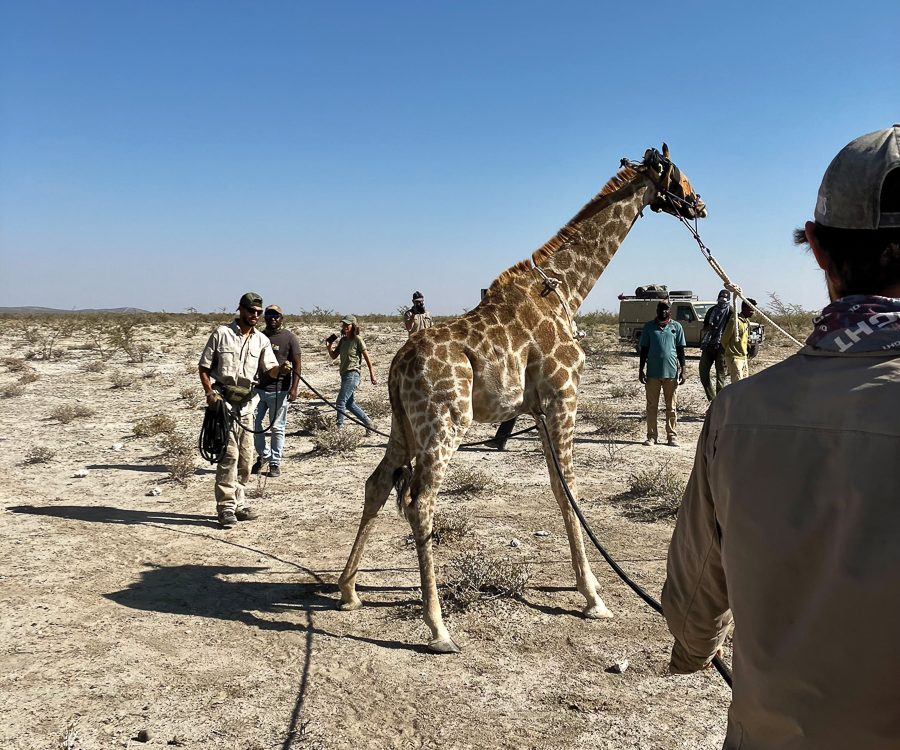Conservation | Leopards & Farmers Co-existing
May 21, 2015Conservation | Setting Eco-Standards for Tourism
May 26, 2015Our Fragile Earth: Lichen Fields protection Project
Ministry of Environment and Tourism and Ministry of Youth, National Service, Sport & Culture
The Namib Desert appears to be bare of plant life. However, lichens grow in great diversity on west facing slopes and surfaces where they draw moisture from the fog. Lichens are the result of symbiotic relations between algae and fungi. They grow extremely slowly, but stabilize the ground surface and prevent soil erosion, making them a vital component of the Namib environment. Lichens also provide food for a variety of invertebrates and even springbok at dry times.
It is estimated that some of the lichen fields in the Namib Desert are hundreds or even thousands of years old, as they can survive long periods of drought. However, they die if they are disturbed. Off-road driving is a serious threat to lichen fields, and once they are damaged, it will be decades before they grow back.
To raise awareness of the threats to lichen fields and aid in their protection, the Ministry of Youth, National Service, Sport & Culture and the Ministry of Environment & Tourism initiated the Lichen Fields Protection Project to devise appropriate ways and means to ensure the future survival of lichen fields.
Youth Work Camps
With support from Nedbank’s Go Green Fund and other civic-minded companies, the Lichen Fields Protection Project organized two youth work camps at Henties Bay and Cape Cross in March and June of 2008. The work camps provided young people with an opportunity to protect the most vulnerable lichen fields by fencing them off with poles and steel cables.
Work camps were also tailored to ensure that the project participants were not just engaged in manual activities but also learned more about their environment. This was done deliberately as young people can only meaningfully conserve their environment if they understand its importance and their role in its protection. Camp activities ranged from environmental education games, role plays and debates and discussions on environmental challenges. It also included activities to raise awareness by providing visitors, anglers and tourists at the coast with information on the damage caused by off-road driving.
World Environment Day
The Lichen Fields Protection Project organised a World Environment Day event as a platform to raise awareness of the significance of lichens and the need to conserve them. As part of the celebrations, a massive clean up operation was held along the coast from Mile 14. Approximately 300 young people from Dibasen Secondary School, Petrus Ganeb Secondary School, Kolin Foundation Secondary School, Martin Luther High School and the post-school youth from Swakopmund participated.
Patrolling and Maintenance
To prevent further damage to lichen fields, the Project participants patrolled the most vulnerable lichen fields during the festive season and long weekends in 2008. They also repaired existing cables and applied grease to the steel cables to prevent them from rusting.
Information Boards
The absence of appropriate warning signs for the protection of lichens in some areas allows tourists, visitors and anglers to drive through the lichen fields unaware of the destruction they cause. The Lichen Fields Protection Project designed information boards to raise public awareness to prevent further destruction caused by off-road driving.
By involving Namibia’s youth in this conservation project, the results of the project should continue to produce positive outcomes for the future health and well-being of our country’s important lichen fields.




